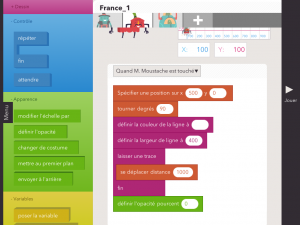There are so many reasons.
It is because some people learned to code that the U.S. government sent astronauts to the moon or that that the Canadian success story of the CanadaArm and the astronaut Chris Hadfield took place:
http://www.youtube.com/watch?v=KaOC9danxNo
Without coding, Steve Jobs could not have developped the Apple company, Bill Gates Microsoft, same goes for facebook, twitter or any type of program for that matter. Here they discuss how fundamental is coding. It is the new language of the rock stars.
http://www.youtube.com/watch?v=nKIu9yen5nc
Our phones and future phones are impossible without coding. They are more powerful computers than the first computers that sent astronauts to the moon.
Banks and our economies need to rely on coding, and our doctors too for many of their instruments. Technology is not going away, at least I do not think so.
Mitch Resnick describes here why students should learn to code: it allows them to express themselves in so many different ways.
http://www.ted.com/talks/mitch_resnick_let_s_teach_kids_to_code.html
Coding is a new basic; it is why I teach coding but it could be argued that there are more compelling reasons why coding is necessary.
In class, coding needs not and perhaps should not be taught by itself. It can definitely be combined with writing. Technical writers are also quite necessary. Coding is fun for students. It is a very engaging activity. Since it is so engaging, I have no difficulty having students write or talk about what they did. They write and talk with so much enthusiasm. It allows the inclusion of oral and writing abilities and the development of technical writing skills.
The volunteers of Black Girls Code know that people of color or of different backgrounds have more difficulty finding suitable work. If you know how to code well, there is a respectul and well paying job for you. Due to the shortage of qualified people, many engineers and computer scientists get hired before they even complete their program and not to say the least, at a high paying salary. Why not give people who are disadvantaged the ability to find work?
http://www.blackgirlscode.com/
The other end of the spectrum is also true. For those who are gifted in mathematics for instance, using computers and also programming can be a way to get them interested in mathematics again, to go further in their skills and conceptions.
http://www.ted.com/talks/conrad_wolfram_teaching_kids_real_math_with_computers.html
In the following talk, Ali Carr-Chellman discusses how the current school system does not engage boys, it does not address their culture, the culture of video games. Statistics has shown that boys are doing less and less well in school and perhaps we need to so something about it.
http://www.ted.com/talks/ali_carr_chellman_gaming_to_re_engage_boys_in_learning.html
For boys whose culture is video games, giving them the tools to create their own video games using coding can be the hook they need to reingage in school. Some of my students were so fascinated with coding, that they created games in our computer club, others created them to be included in their projects. They were not asked to do so but they enjoyed it so much they coded for fun and to present their projects in a way that was fascinating to them.
While looking at my class, I still see some students that seem to lack focus. Some of them have parents who immigrated from war-torn areas like Somalia, Syria or Egypt. Some of them want to homeschool their own children because the school system does not address their needs. How do I inspire such children?
Using Hopscotch, it just easy to program flags, in fact it is some of the easiest programs to write, a stepping stone to learn programming. Having students also doing a research project about their countries and the beautiful things it has could be a hook. There is a book that seems quite adequate for primary. It is a way to make them feel included.
But most of all, I am thinking that giving those students the tools to solve world problems, to be part of the solution instead of being excluded might be the best thing I could do to inspire them. For example, we have grown algae in class to simulate the work of scientists who are trying to solve the energy crisis by having green petrolium made from algae. That is not however the only thing that could be done around this subject. Jonathan Trent in his talk about algae uses simulation to show how his system works.
http://www.ted.com/talks/jonathan_trent_energy_from_floating_algae_pods.html
This type of simulations is done using coding. Why not ask our disengaged, those who feel excluded to be part of the solution?


![IMG_0200[1]](https://mcdboulanger.edublogs.org/files/2013/11/IMG_02001-23c3p8z-e1383608456843-225x300.jpg)
![IMG_0199[1]](https://mcdboulanger.edublogs.org/files/2013/11/IMG_01991-2enkpqc-e1383608590358-225x300.jpg)


